A friend suggested I post about the materials that I use.
Okay.
One of the most important lessons I learned while in art school was to use high quality materials. Cheap paper, brushes and paints will do you no good.
The materials I use now are the same ones I used as a student. I’ve tried others, but I’ve come back to these – Windsor Newton brushes and paints (watercolor and gouache) and Arches paper. That’s it.
Okay, a little more information.
Here is the set up on my desktop when I paint. Brushes to the left, stretched paper in the middle, and palette and water to the right.
Brushes:
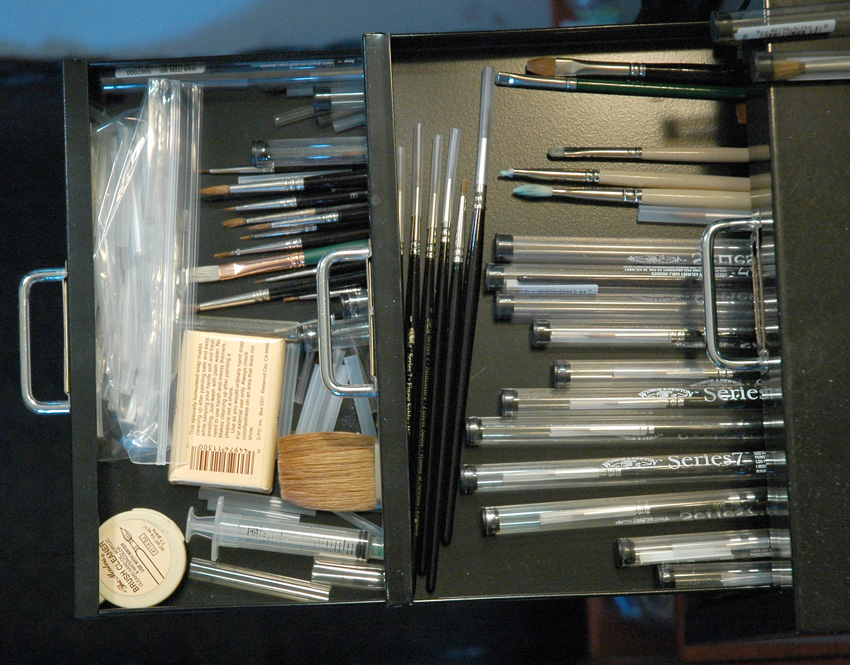
In my junior year at RISD, a teacher introduced me to W&N’s series 7 brushes. He extolled them as the gold standard of watercolor brushes. He was right. He claimed that while they were expensive – he was right – they would last a lifetime. He was wrong.
Lester recommended getting a series 7, number 7. He said that that one brush was all we would need to paint any picture, and for a couple years that’s all I used.
Here it is, my first series 7:
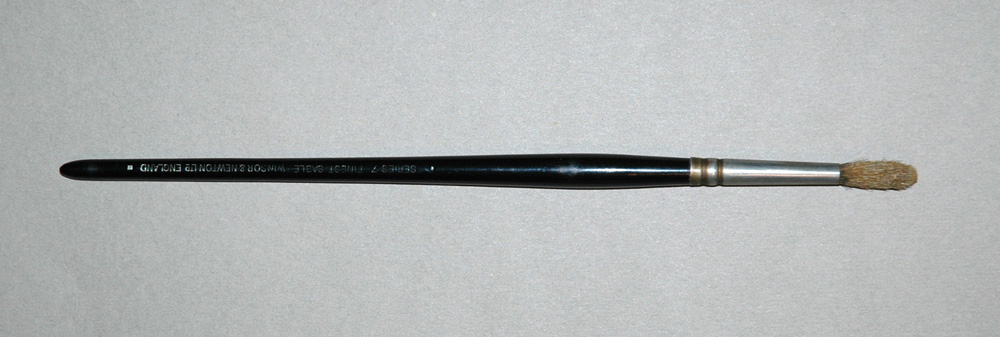
As you can see, it did not last me a lifetime. Her are some pieces I did in my senior year with that brush:
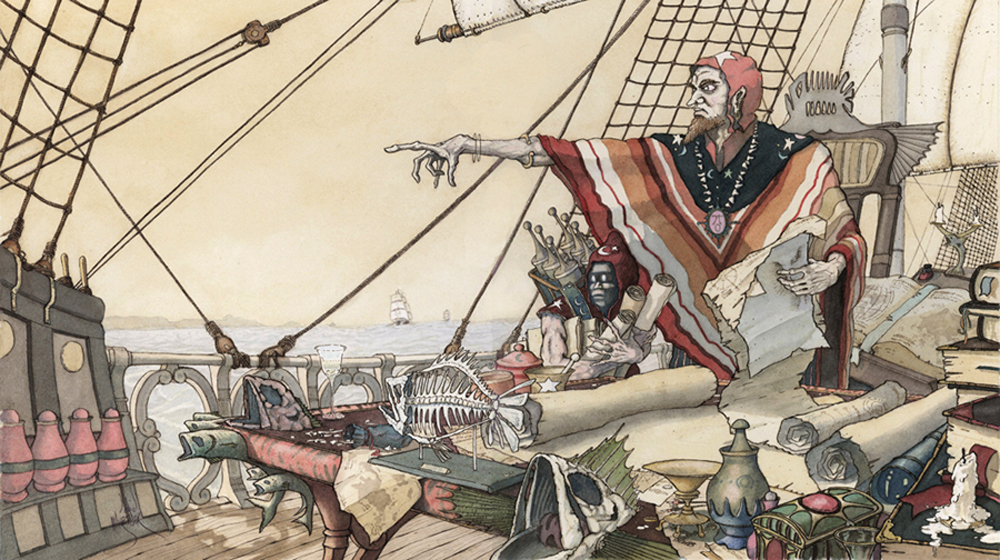
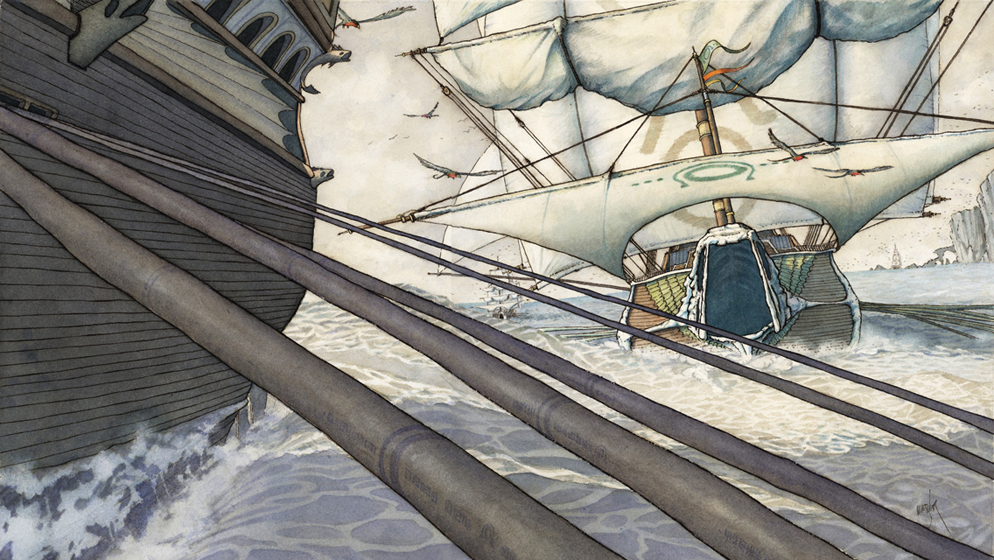
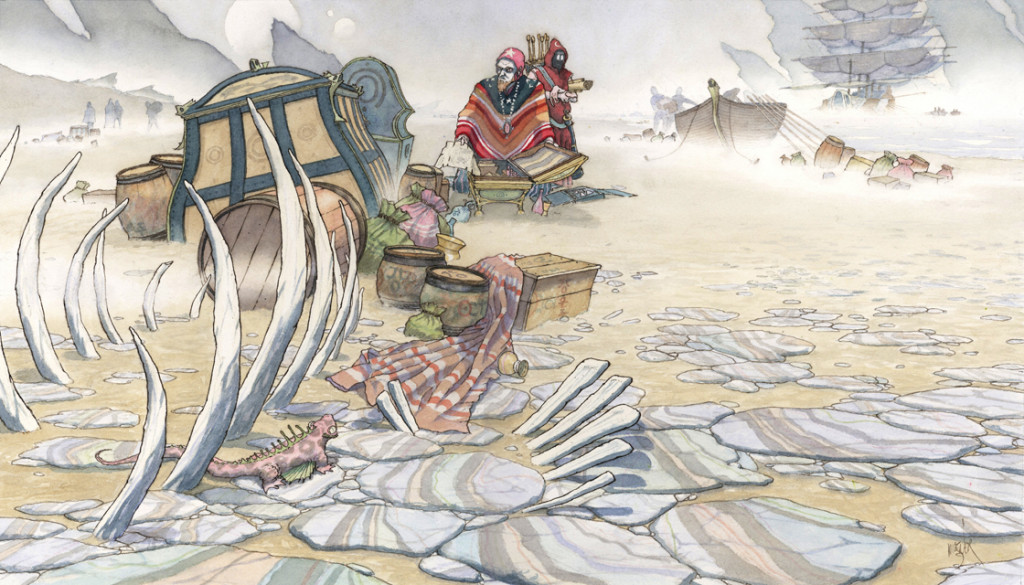
I eventually new brushes, in other sizes as well. I use from 000 to number 9 – plus a couple big flat brushes for large washes. I made a wooden brush rest on which I line them up. When I need a brush I want to know exactly where to find it, without searching all over my desk for it.
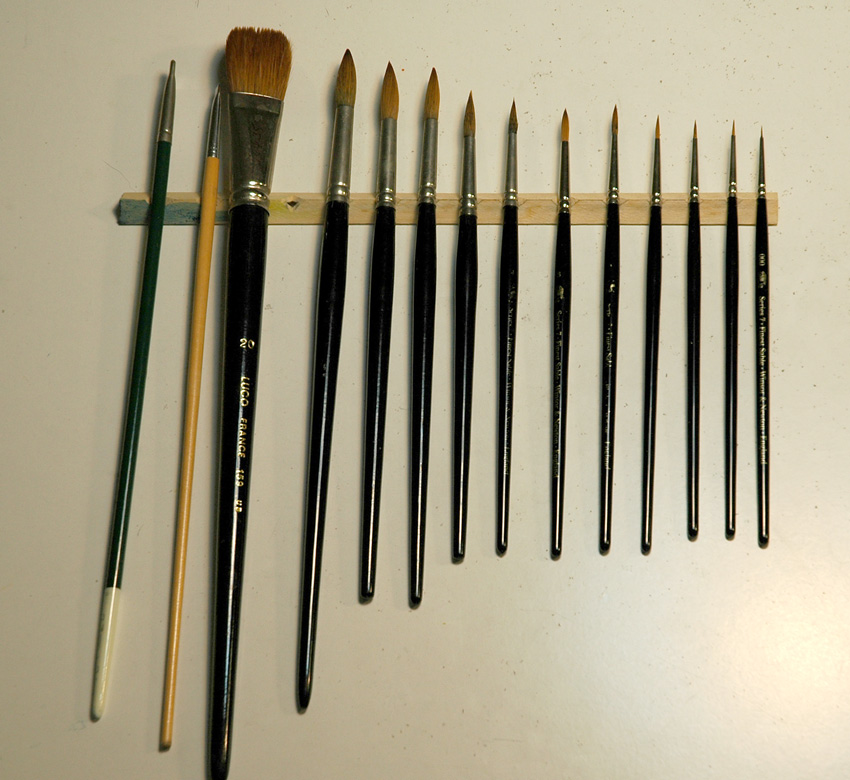
The two brushes on the left are small bristle brushes that I use to lift highlights.
Paper:

I’ve tried lots of papers – Fabriano, Whatman, etc. – and while they all have things to recommend them, I prefer Arches – both hot and cold press – 140 lb, occasionally 90 lb. I tried others mostly because I wanted a really white paper. Arches had a slight yellow cast which caused problems during the printing of books. During the separations the scanner would read that tone. To get a white white, the scanner would have to compensate for that tone. That affected the color balance of the rest of the painting. When Arches came out with their “bright white” paper, I was back for good.
I stretch the paper, which I covered in another post.
Paints:
Windsor Newton again, watercolor and gouache, artist’s grade:

And Golden acrylics:
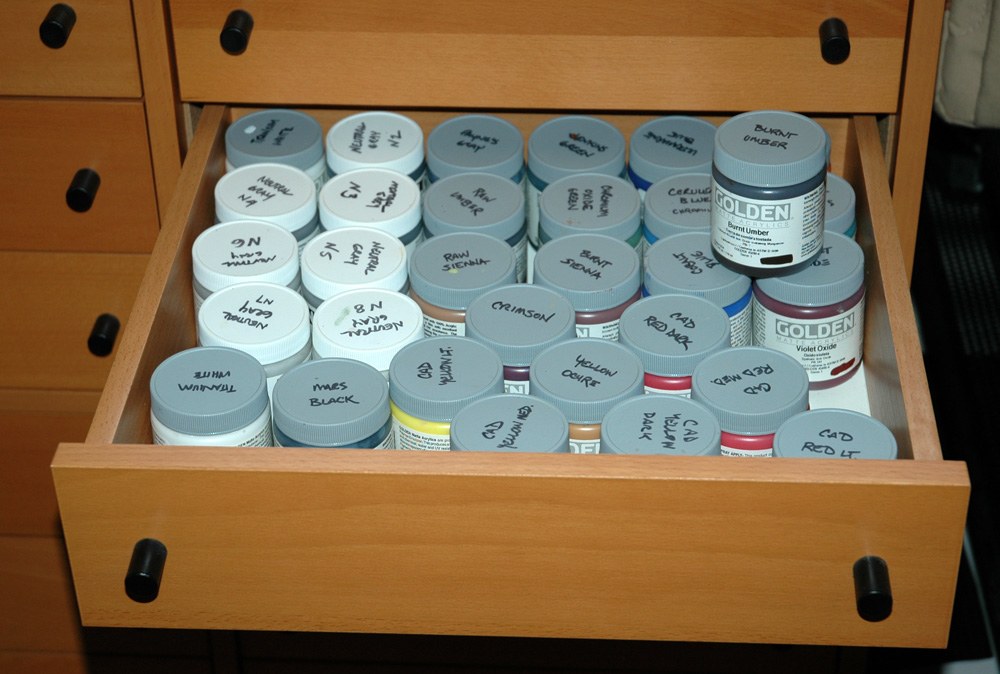
I set up my palette to the right of my paper. I use three water jars- small, medium, large. The largest rinses off most of the paint and gets very dark, very quickly. The medium jar gets almost all the rest and the small jar is a final rinse to make sure. I started this in art school, on direct order from another teacher.
In the little tray to the right of the palette is a syringe. I use this to fill the wells in the palette.
Other materials:
I use mechanical pencils with lead refills. No shavings to deal with:

On the left is an electric eraser. I don’t use the eraser. The thing next to it is a sharpener attachment. It fits into the top and spins really fast and creates a very sharp point. Poking the point into a piece of Styrofoam cleans the dust off.
Drafting tools:
These were my father’s from when he was in engineering school:
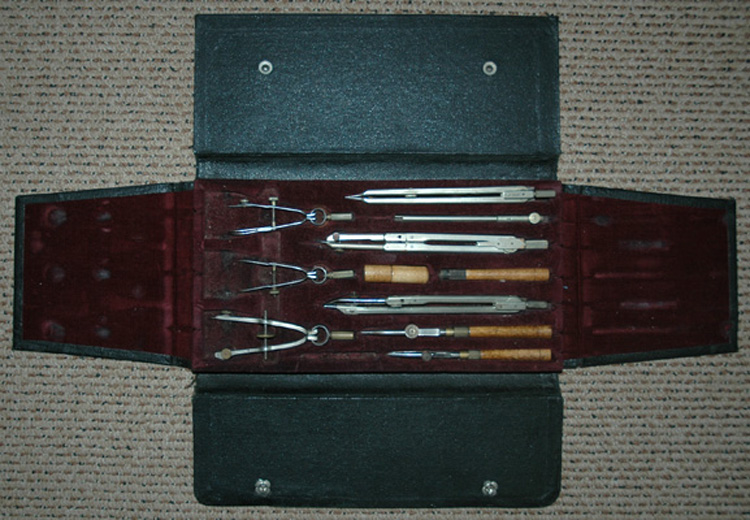
He gave them to me when I was a kid and I use them – all the time – to this day.
Music:
As important as any of the other things mentioned her is what I listen to as I work.
Kids, this is a “stereo” (Nakamichi):

Hooked up to it are my computer files. There are also CD’s. A portion of what’s under my worktable:
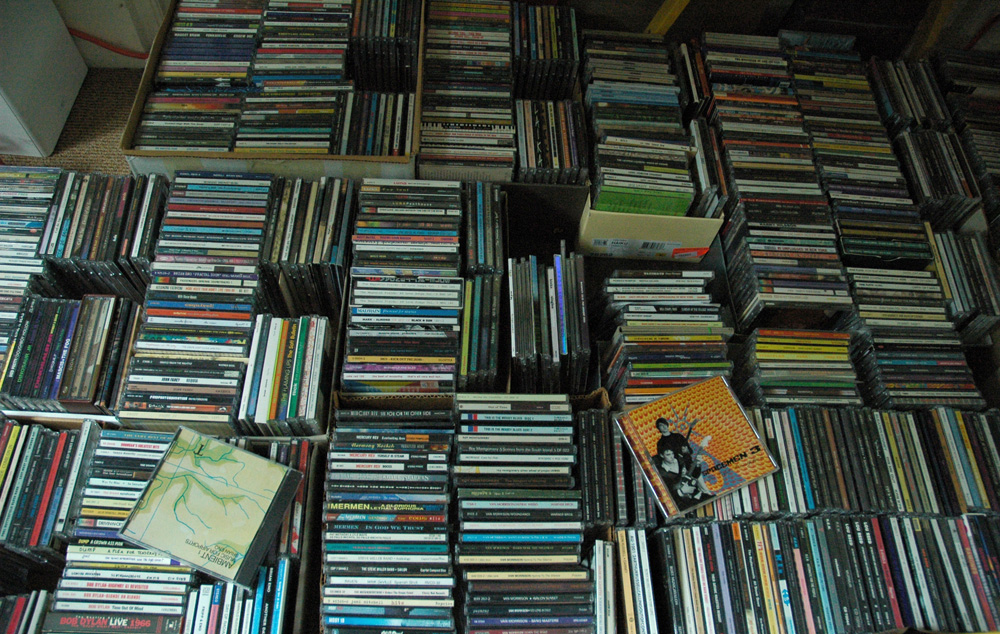
After decades, I sold most of my vinyl. I carried thousands of albums up and down many, many steps over the years. No more. I kept a couple hundred that have meaning, plus I still buy a few each year:
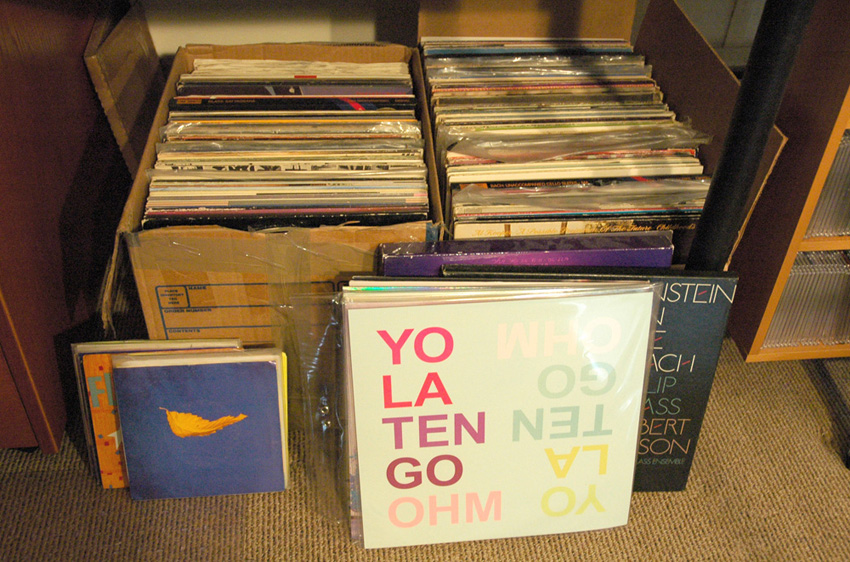
There’s plenty of other stuff that I use (Canson tracing paper in particular), but these have been the essentials since my student days.